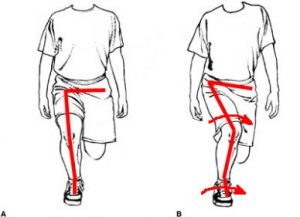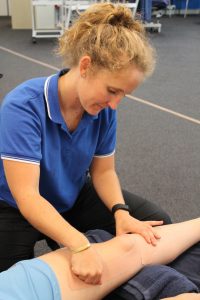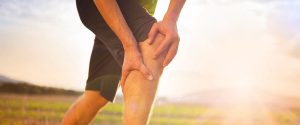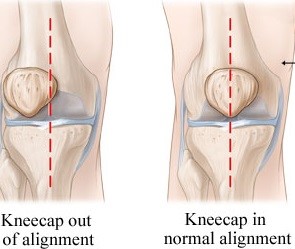Runner’s Knee – Patellofemoral Pain
Sydney-siders love a good run! And with the Blackmores running festival coming up, beautiful scenery & awesome weather it’s easy to see why. So today we look at the most common type of knee pain that can affect runners as well as people playing many other sports that involve running and jumping.
The knee is the most common site for pain in runners, but it’s not just “runners” that are at risk. Many other sports that involve running &/or jumping have a relatively high risk of knee injuries. One very common cause of knee pain is Patellofemoral Pain Syndrome, which accounts for up to 40% of all knee problems in sports medicine centres. The pain is felt around or behind the kneecap & occurs when the kneecap (patella) does not align correctly into the groove on the end of the thigh bone (femur). It is common in young people, & affects more women than men.
Symptoms Of Patellofemoral Pain Syndrome
Pain is either felt around the front part of the knee or along one or both sides of the kneecap. It can sometimes be hard to find a specific spot where the pain is felt the most, especially because sometimes it feels like it is hidden away behind the kneecap. Your knee may be making some grinding or clicking noises, & there may be some swelling.
Often there is no specific cause (eg a fall or twist) of patellofemoral pain. Sometimes you may be able to relate it back to an increase in running or jumping volume, or things like new shoes or more hill running. It often begins as a niggle then gradually gets worse if you continue to exercise on it, eventually stopping you doing your normal training. It usually settles temporarily if you stop exercising but keeps coming back when you return.
Patellofemoral pain is usually made worse with anything that increases the load within your knee, eg taking your weight in a bent-knee position. Examples of painful activities can include;
- • squatting, lunging & kneeling
- • going up & down stairs or hills
- • jogging or running, especially on hills or slopes
Some people also get pain from sitting in a bent-knee position for long periods of time, eg working at a desk or sitting in a movie theatre. This is because this position squashes the inflamed back surface the kneecap onto the end of the thigh bone, causing pain after a while.
Causes Of Patellofemoral Pain Syndrome
The main cause of patellofemoral pain is when the kneecap doesn’t “track” properly in the femoral groove when we bend our knee. It can get pulled out to the side of the groove, meaning that it rubs on the wrong places & becomes inflamed. Excessive or rapid increases in loading, usually due to increasing training or running volumes too fast, are also common factors that contribute to patellofemoral pain.

- 1. your pelvis drops to one side, increasing the tension on the outside of the leg & pulling the knee cap outwards
- 2. poor glutes (hip muscle) strength means that your knee collapses inwards & rolls inside past the line of your big toe
- 3. there may be an imbalance between the muscles on the inside of your quads (VMO) versus the outside (VL).
- 4. you foot rolls in too much (pronation), causing the knee to collapse inwards so that your quads muscles have an outwards angle of pull on your kneecap.
Females are more likely to develop patellofemoral pain than males (3:2). This is due to women having a bigger “Q Angle”, which is where the quads muscles have a more outwards pull on the kneecap because women’s hips tend to be wider than mens.
What Can I Do About My Knee Pain?
Assessing & correcting your biomechanics is a big part of getting your knee pain resolved. You need to release any tight muscles on your outer thigh & hip, usually by using a foam roller or spikey ball. You will also need to strengthen muscles that are not keeping your leg and knee in the right alignment. The usual problem is that your knee rolls inwards over your big toe too much, so strengthening your glutes muscles to correct this is critical. Making sure that your inner quads muscle (your VMO) is strong enough to balance your outer quads muscle (VL) is also important.
Your foot position also needs to be checked. The most common foot problem is over-pronation, where your inner arch collapses & rotates your shin and knee inwards too much. You will need to ensure that you have the right shoes for your foot type, eg if you are an over-pronator then pronation control shoes or orthotics are likely to help you. However as physio’s we always find that shoe type or orthotics alone are not the full solution – they are only one component. You must correct your other biomechanical factors like hip control as well.
We can help you beat your knee pain

If you need help with your knee pain then you can book an appointment online or contact us for more info, or give us a call on +61 2 9280 2322 to chat to one of our friendly team.



